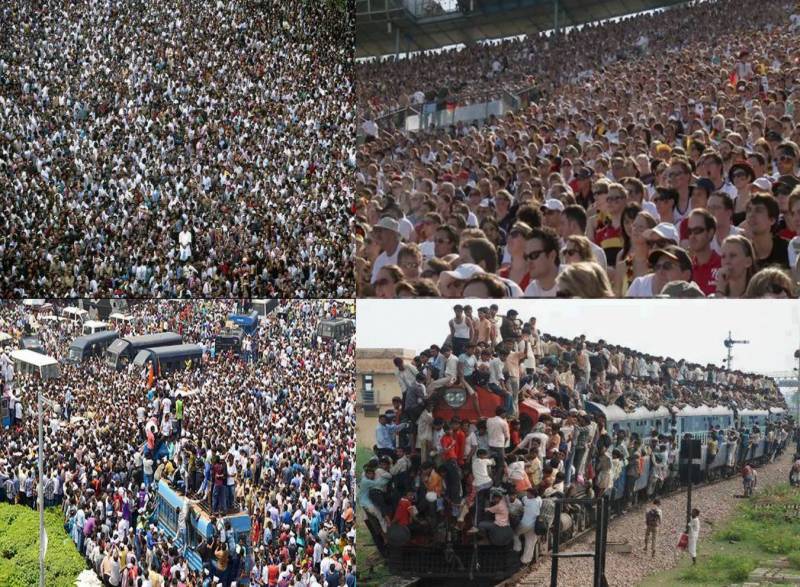UN-report-claims-global-population-to-reach-9.8-billion-by-2050..jpg" />
UN report claims global population to reach 9.8 billion by 2050.
New York, 28 Ramadan 1438/23 June 2017 (MINA) – The world population is now nearly 7.6 billion, up from 7.4 billion in 2015, spurred by the relatively high levels of fertility in developing countries – despite an overall drop in the number of children people have around the globe, WAM reported Thursday, citing the United Nations.
Also Read: Finland’s Largest Retailer Halts Israeli Product Sales
The concentration of global population growth is in the poorest countries, according to World Population Prospects: The 2017 Revision, presenting a challenge as the international community seeks to implement the 2030 Sustainable Development Agenda, which seeks to end poverty and preserve the planet.
“With roughly 83 million people being added to the world’s population every year, the upward trend in population size is expected to continue, even assuming that fertility levels will continue to decline,” said the report’s authors at the UN Department of Economic and Social Affairs.
At this rate, the world population is expected to reach 8.6 billion in 2030, 9.8 billion in 2050 and surpass 11.2 billion in 2100.
The growth is expected to come, in part, from the 47 least developed countries, where the fertility rate is around 4.3 births per woman, and whose population is expected to reach 1.9 billion people in 2050 from the current estimate of one billion.
Also Read: 1,000th Western Military Supply Plane Lands in Israel Since Gaza War
In addition, the populations in 26 African countries are likely to “at least double” by 2050, according to the report.
That trend comes despite lower fertility rates in nearly all regions of the world, including in Africa, where rates fell from 5.1 births per woman from 2000-2005 to 4.7 births from 2010-2015.
In contrast, the birth rate in Europe was 1.6 births per woman in 2010-2015, up from 1.4 births in 2010-2015.
“During 2010-2015, fertility was below the replacement level in 83 countries comprising 46 per cent of the world’s population,” according to the report.
Also Read: Trump to Meet with NYC Mayor-Elect Mamdani at White House on Friday
Ageing population
The lower fertility rates are resulting in an ageing population, with the number of people aged 60 or over expected to more than double by 2050 and triple by 2100, from the current 962 million to 3.1 billion.
Africa, which has the youngest age distribution of any region, is projected to experience a rapid ageing of its population, the report noted.
Also Read: Syria, Jordan Condemn Netanyahu’s Visit to Occupied Syrian Buffer Zone
“Although the African population will remain relatively young for several more decades, the percentage of its population aged 60 or over is expected to rise from five per cent in 2017 to around nine per cent in 2050, and then to nearly 20 per cent by the end of the century,” the authors wrote.
In terms of other population trends depicted in the report, the population of India, which currently ranks as the second most populous country with 1.3 billion inhabitants, will surpass China’s 1.4 billion citizens, by 2024.
By 2050, the third most populous country will be Nigeria, which currently ranks seventh, and which is poised to replace the United States.
The report also noted the impacts of the flows of migrants and refugees between countries, in particular noting the impact of the Syrian refugee crisis and the estimated outflow of 4.2 million people in 2010-2015.
Also Read: UNIFIL Reports Over 7,300 Israeli Violations of Lebanese Airspace Since Ceasefire
In terms of migration, “although international migration at or around current levels will be insufficient to compensate fully for the expected loss of population tied to low levels of fertility, especially in the European region, the movement of people between countries can help attenuate some of the adverse consequences of population ageing,” the authors wrote. (T/RS5/RS1)
Mi’raj Islamic News Agency (MINA)
Also Read: Report Exposes Canada’s Role as ‘Weapons Transit Corridor’ for Israel










![Israeli tanks and APC’s gather by the Israeli – Lebanese border. Amid Israel’s escalating campaign against Hezbollah in Lebanon on September 30, 2024. [Erik Marmor/Getty Images]](https://en.minanews.net/wp-content/uploads/2024/10/IMG_20241001_203226-300x197.jpg)























 Mina Indonesia
Mina Indonesia Mina Arabic
Mina Arabic